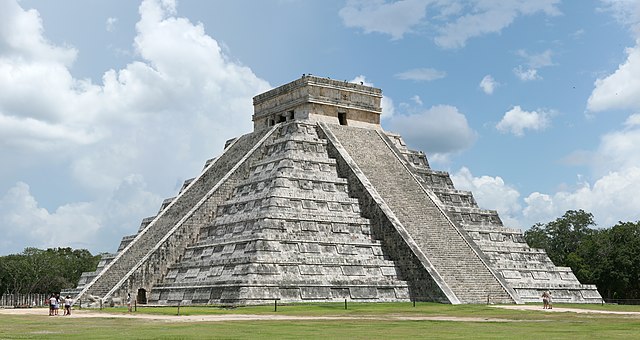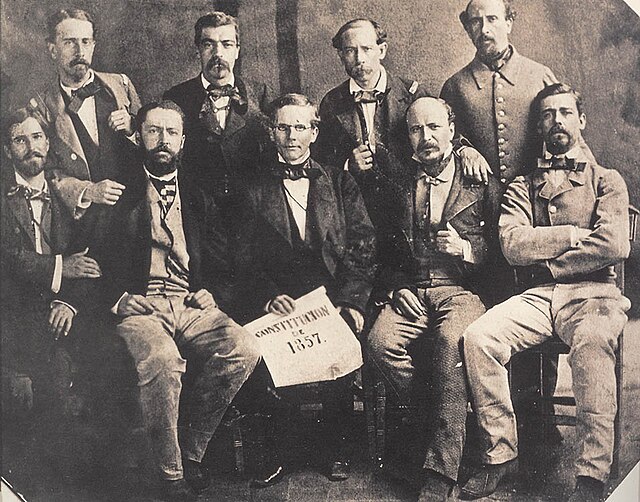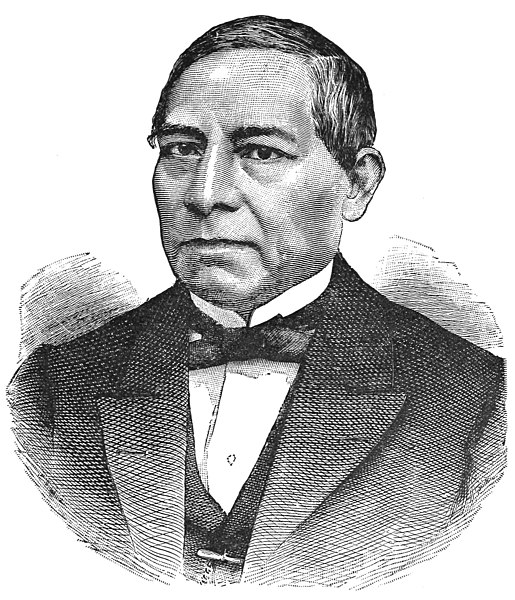The written history of Mexico spans more than three millennia. First populated more than 13,000 years ago, central and southern Mexico saw the rise and fall of complex indigenous civilizations. Mesoamerican civilizations developed glyphic writing systems, recording the political history of conquests and rulers. Mesoamerican history before European arrival is called the prehispanic era or the pre-Columbian era. The Spanish conquest of the Aztec Empire established the colony of New Spain, leading to the imposition of Spanish rule over the indigenous populations, the spread of Christianity, the exploitation of natural resources, and the introduction of new crops, animals, and diseases.
Detail of a relief from Palenque, a Classic-era city. Maya script is the only writing system of the pre-Columbian Americas to be completely known and enabled the beginning of recorded history.
Virgin of Guadalupe and castas, 1
The Castillo, Chichen Itza, Mexico, ca. 800–900 CE
Panel 3 from Cancuen, Guatemala, representing king T'ah 'ak' Cha'an
In the history of Mexico, La Reforma, or reform laws, refers to a pivotal set of laws, including a new constitution, that were enacted in the Second Federal Republic of Mexico during the 1850s after the Plan of Ayutla overthrew the dictatorship of Santa Anna. They were intended as modernizing measures: social, political, and economic, aimed at undermining the traditional power of the Catholic Church and the army. The reforms sought separation of church and state, equality before the law, and economic development. These anticlerical laws were enacted in the Second Mexican Republic between 1855 and 1863, during the governments of Juan Álvarez, Ignacio Comonfort and Benito Juárez. The laws also limited the ability of Catholic Church and indigenous communities from collectively holding land. The liberal government sought the revenues from the disentailment of church property, which could fund the civil war against Mexican conservatives and to broaden the base of property ownership in Mexico and encouraging private enterprise. Several of them were raised to constitutional status by the constituent Congress that drafted the liberal Constitution of 1857. Although the laws had a major impact on the Catholic Church in Mexico, liberal proponents were not opposed to the church as a spiritual institution, but rather sought a secular state and a society not dominated by religion.

Allegory of the Constitucion of 1857, Petronilo Monroy, 1869.
Liberals posing with a copy of the Constitution of 1857.
President Benito Juárez







